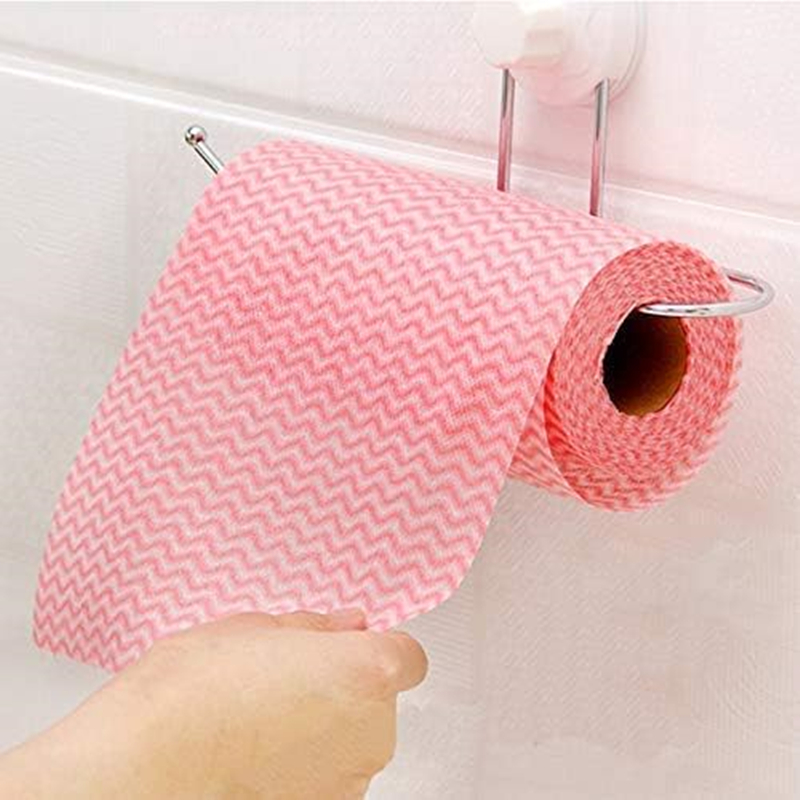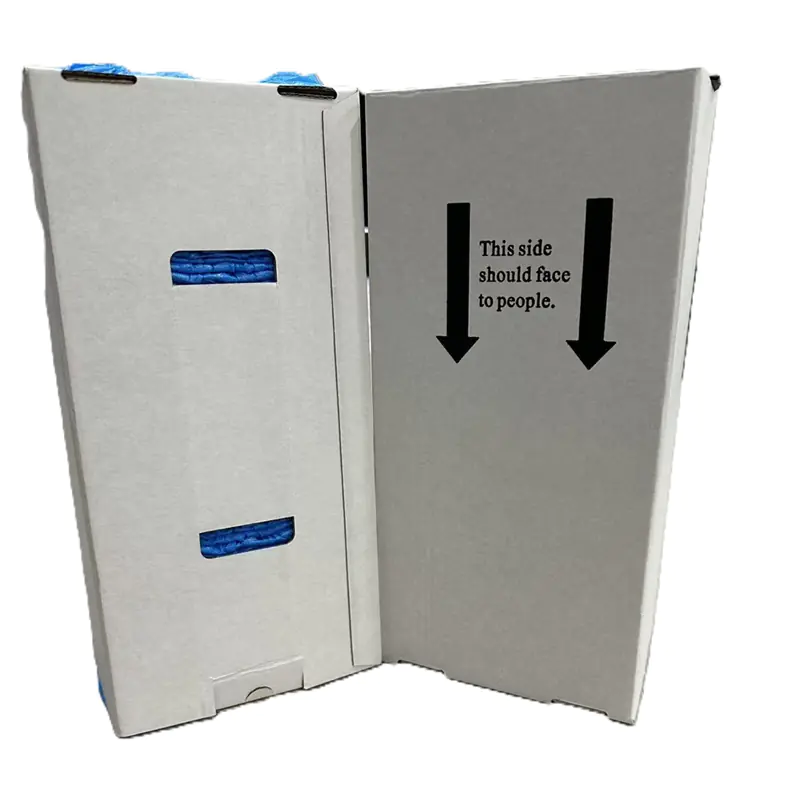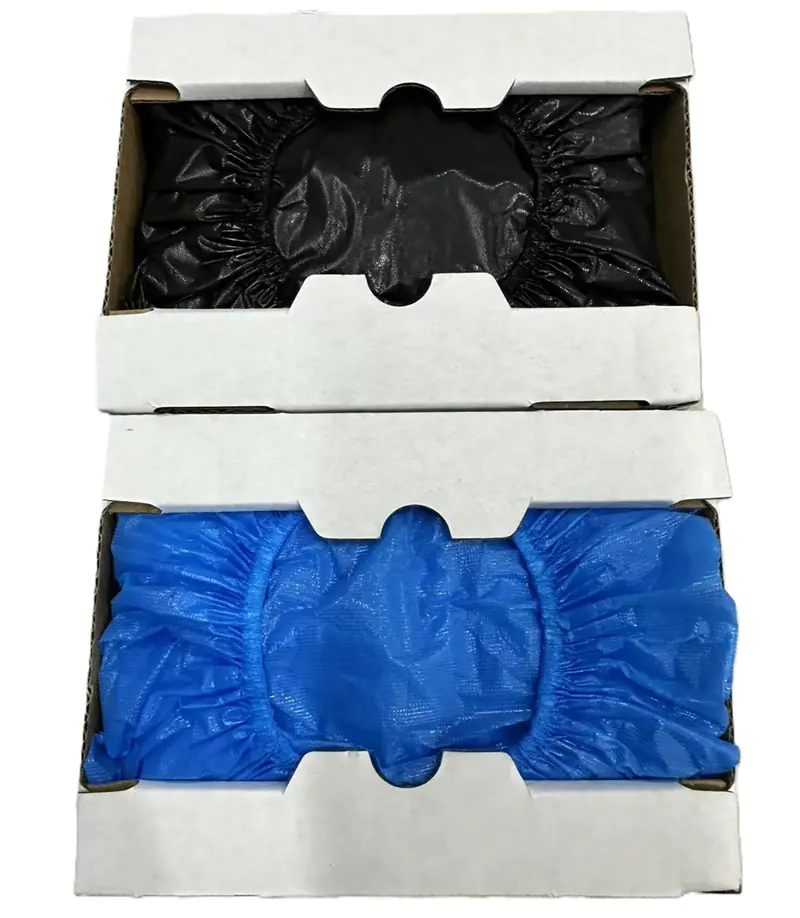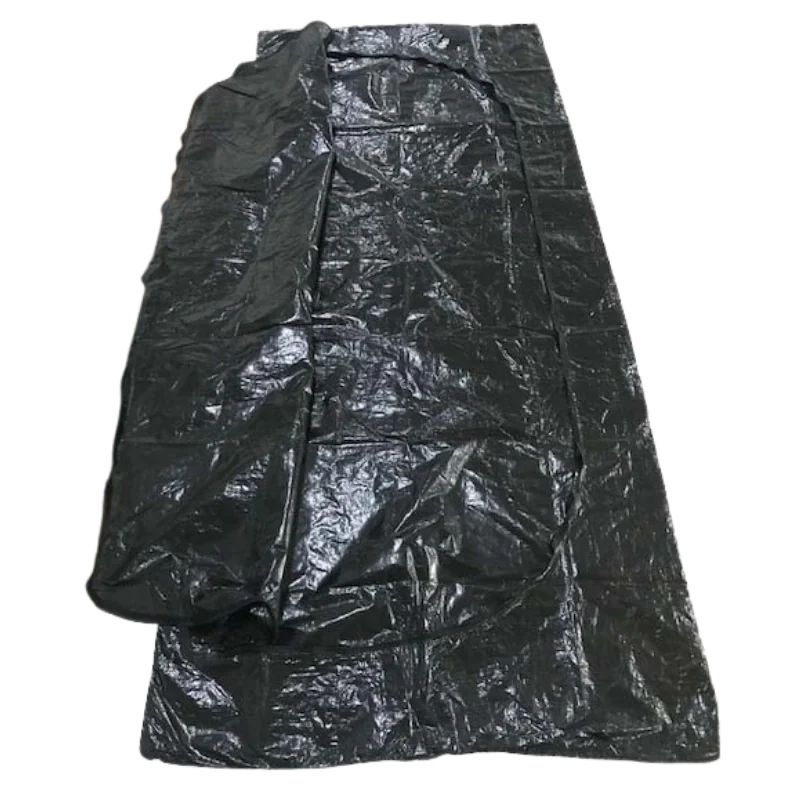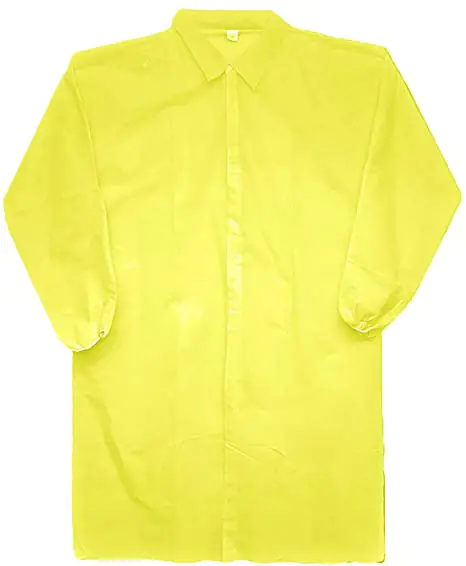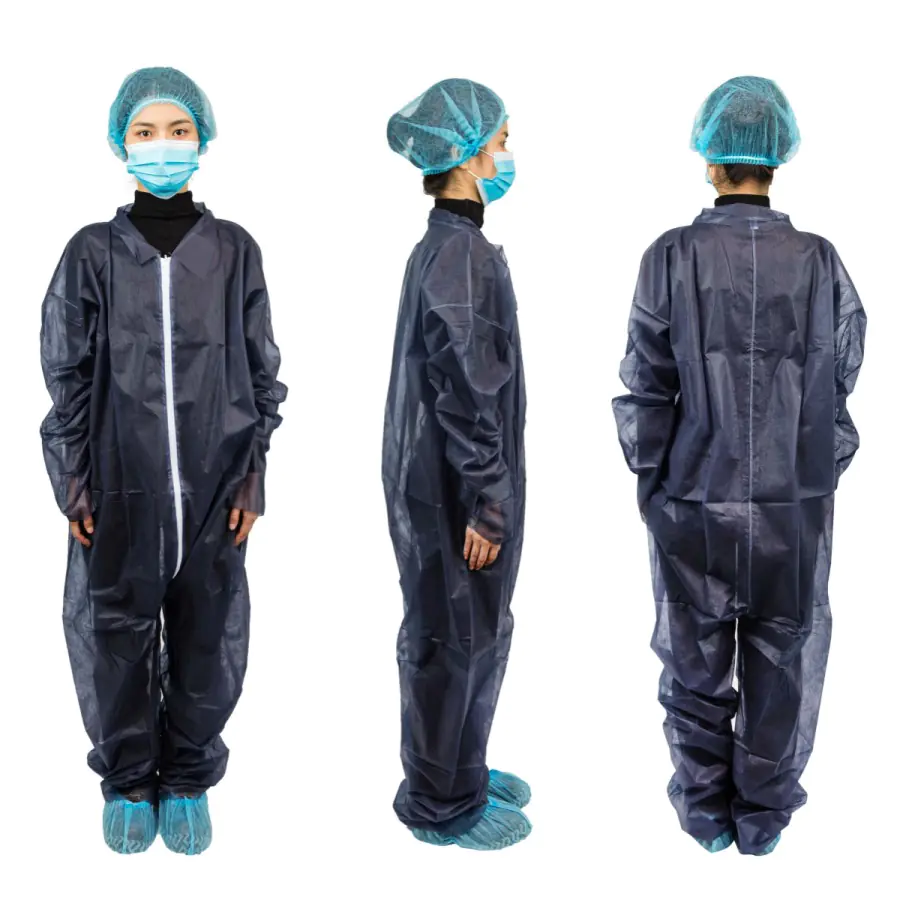1. The Great Kitchen Towel Debate
Choosing towels for your kitchen seems easy. But it’s a big choice for your business! Your commercial kitchens need the right tools. Do you pick 使い捨てキッチンタオル that you use once? Or do you pick reusable options, like cloth towels, that you wash and use again?
Many people argue about this. Some worry about cost comparison. Which costs less money over time? Others think about the environmental impact. Which choice is better for our planet? And very important is safety. We must think about hygiene standards. Which towel keeps your kitchen cleaner and safer?
This guide will help you look at both choices. We will compare paper towels and cloth towels. This helps you pick the best option for your business needs. Let’s figure out this kitchen towel puzzle together!
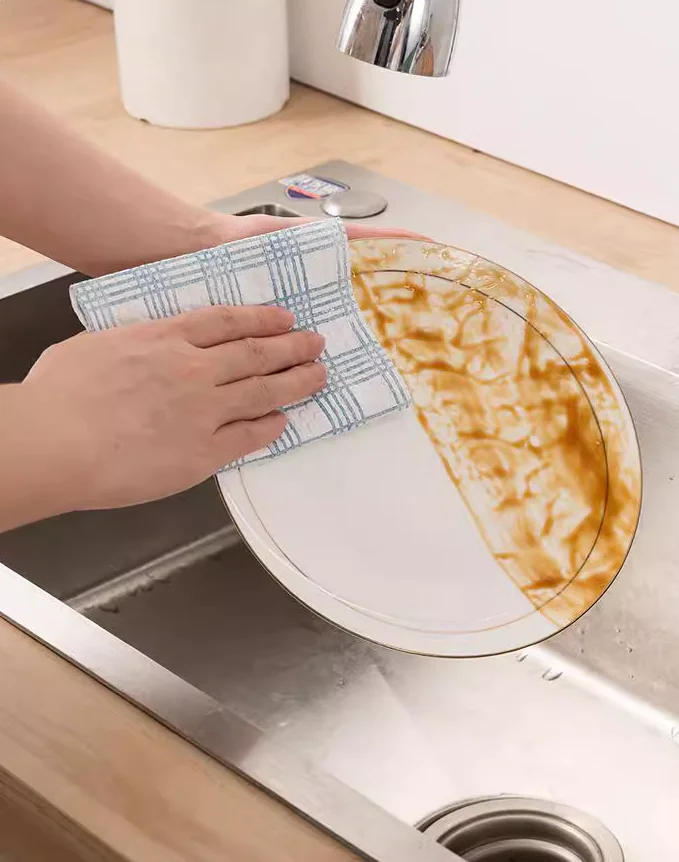
2. Quick Look: Paper vs. Cloth Towels
Let’s compare them fast.
- コスト:
- Disposable Towels: Cost about 1 to 3 cents for each sheet. Very cheap to buy at first.
- Reusable Towels: Cost $1.50 to $3 for each cloth to buy. Plus, washing costs 10 to 30 cents each time. This includes laundry costs like water and power.
- Cleanliness:
- Disposable Towels: Best for stopping germs. Using a new towel each time lowers the cross-contamination risk a lot (by almost 100%).
- Reusable Towels: Can hold germs if they stay wet. Must be washed very well every day. Need careful disinfection protocols.
- Planet Earth:
- Disposable Towels: Can make more trash (single-use waste). Some are compostable products or can be recycled, but need special ways to handle them. Their carbon footprint per use can be higher at first.
- Reusable Towels: Need lots of washing (maybe over 75 times) to be better for the planet than disposables. Washing uses water consumption そして energy usage. Microfiber towels can shed tiny plastics (ocean microplastics).
- Work Needed:
- Disposable Towels: Easy to use and throw away. Saves time on washing. Improves labor efficiency.
- Reusable Towels: Need washing, drying, folding, and storing. Takes more staff time (labor cost optimization needed).
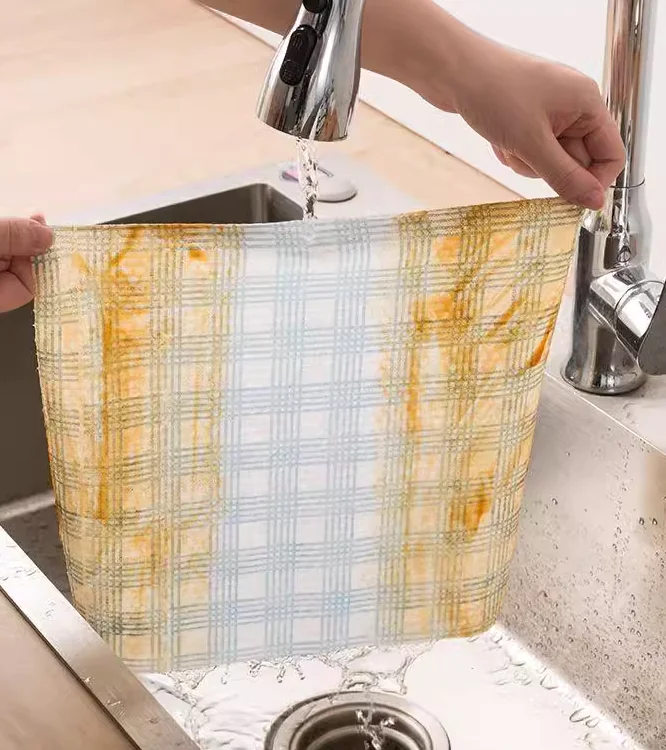
3. Cost Deep Dive: What’s Cheaper for You?
Money matters for every business. Let’s look closer at the costs.
Disposable Towel Costs:
- Buying: You pay for each roll or pack. Bulk purchasing can lower the price per sheet. Some suppliers offer deals like vendor-managed inventory to help.
- Waste: You pay to throw them away (disposal costs). If you choose compostable products, you might need special industrial composting services. This adds to operational expenses. Think about recycling challenges too.
Reusable Towel Costs:
- Buying: You pay more money upfront for the cloths. Think about the reusable cloth lifespan. Good durable textiles last longer.
- Washing: This is a big cost. Laundry costs include soap, hot water (water consumption), and power (energy usage) for washers and dryers. You also need staff time to wash, dry, fold, and store them. This affects your budget allocation.
- Linen Services: Some businesses hire linen services. They pick up dirty cloths and bring clean ones. This adds a regular fee but saves you washing time. Check vendor contracts carefully.
Long-Term Savings?
Reusable cloths can save money over time. But only if you use them many, many times (maybe over 75 or 100 times). You need good maintenance requirements and track your supply chain efficiency. Disposable towels save time, which saves money on labor efficiency. Some studies show businesses save money switching to special disposables like compostable towels. Always do your own cost comparison.
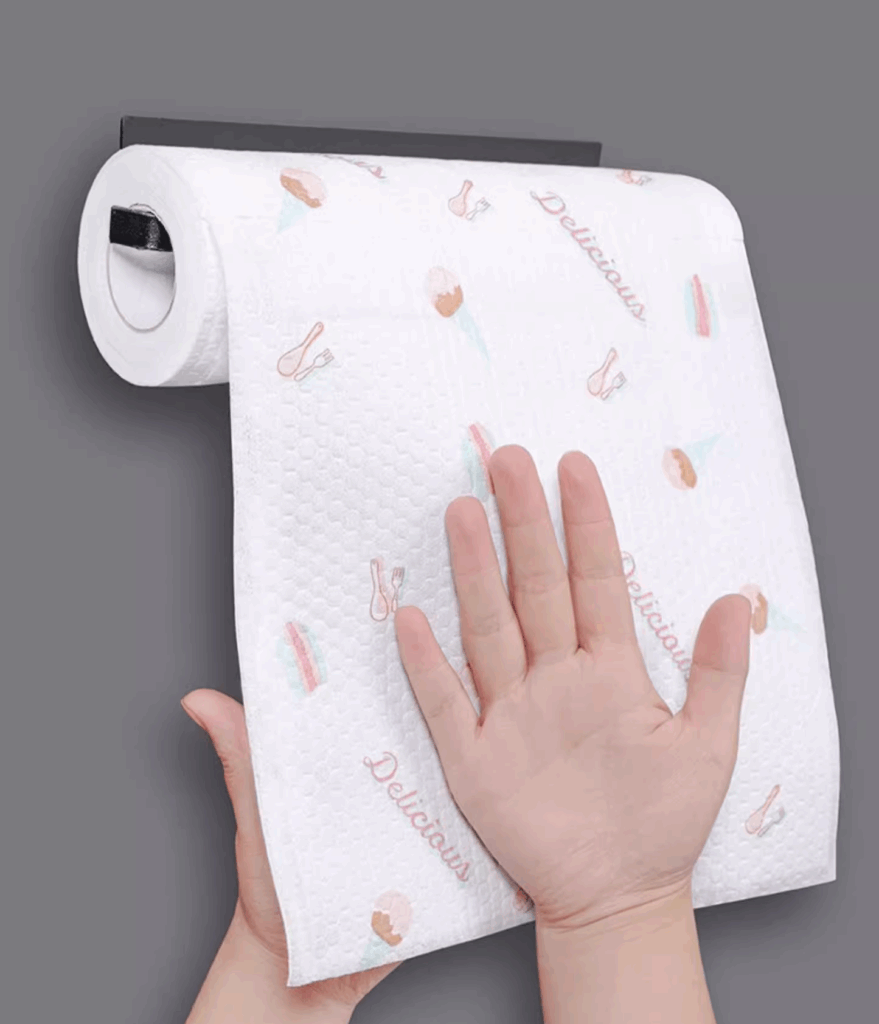
4. Staying Safe and Clean: Which Towel Wins?
Keeping your kitchen clean is super important. This means meeting hygiene standards and keeping customers safe. This is key for food safety compliance and passing health code regulations.
Disposable Towels for Safety:
- Stop Germs: Using a towel once and throwing it away is the best way to stop the spread of germs. This greatly reduces the cross-contamination risk. Germs like bacteria can’t travel from one spot to another on the towel. This helps with pathogen control.
- Food Rules: Disposable towels often meet rules for food prep surfaces. They help follow sanitary workflows.
- Proof: Tests (ATP testing) show that new paper towels are much cleaner than reused cloths, even washed ones. Studies show disposables can kill almost all germs, while reused cloths might still have some left. This is very important in hospital kitchens or places with strict restaurant hygiene needs. Consider OSHA compliance for worker safety too.
Reusable Towels and Safety Risks:
- Germ Risk: If cloth towels stay wet, germs can grow on them. This is called a biofilm. Using dirty cloths can spread germs.
- Washing is Key: Reusable cloths can be safe. But they need very strict cleaning. This means washing them daily in hot water with strong cleaners. Use good disinfection protocols. Some use UV-C disinfection, photocatalytic oxidation (PCO), or cold plasma sanitation in special cases.
- Systems Needed: To use reusable cloths safely, you need systems. A color-coded system helps use different cloths for different jobs (like floors vs. counters). This is part of hygiene zoning. Good staff training is a must. Some cloths have antimicrobial coatings to help fight germs. Using touchless dispensers for soap and sanitizer also helps overall kitchen sanitation. Managing allergen management is also critical.
For places needing top safety, like hospital-grade sanitation, disposables are often the safer choice. They help ensure bacteria prevention and meet post-pandemic protocols.
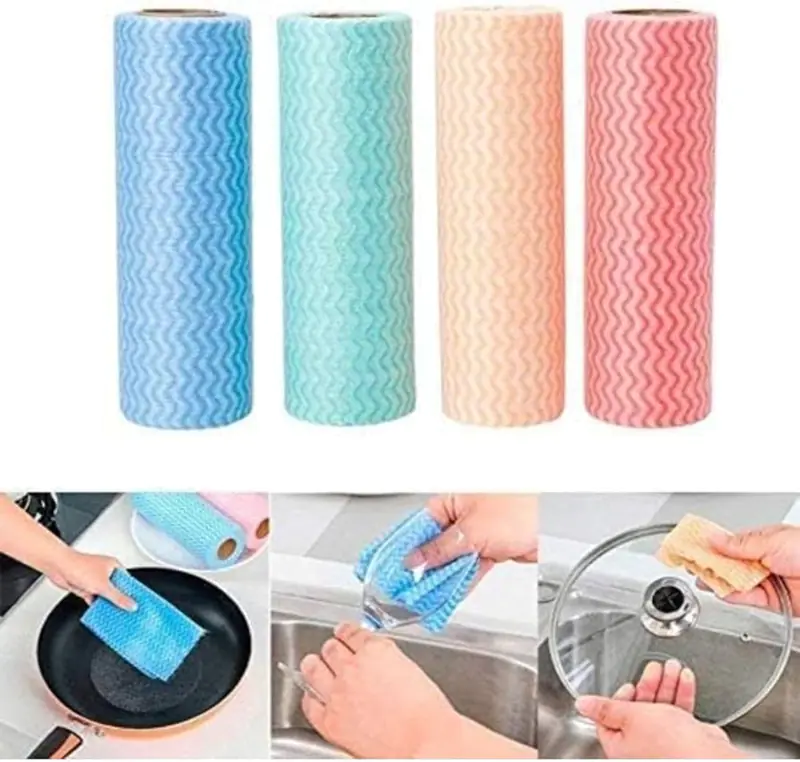
5. Caring for Our Planet: The Towel Test
Many businesses want to be green. Let’s see how towels affect the environmental impact and support sustainability practices.
Disposable Towels and the Earth:
- Trash: Regular paper towels create single-use waste that goes to landfills. This adds to our trash problem.
- Making Them: Making paper towels uses trees, water, and energy. This adds to the carbon footprint.
- Eco Options: There are eco-friendly alternatives!
- Compostable Products: Some towels are made from plants like bioplastics (PLA/PHA) and can break down (degradable packaging helps too). But they need special industrial composting places, which are not everywhere. Check rules like ASTM D6400 (a rule for compostable items).
- Recycled Paper: Towels made from recycled PET (rPET) または post-consumer recycled content use less new stuff. Look for green certifications.
- Plastic-Free Options: Some avoid plastic packaging or coatings. These support waste reduction.
Reusable Towels and the Earth:
- Less Trash: Using cloths many times reduces landfill waste. This fits with circular economy ideas and closed-loop systems.
- Washing Impact: Washing uses lots of water consumption そして energy usage. Using hot water and dryers adds to the carbon footprint. A lifecycle analysis (looking at the product from start to finish) shows cloths need many uses (over 100) to be truly better than disposables.
- Material Matters:
- Microfiber Towels: These clean well but can shed tiny plastic bits (ocean microplastics) when washed.
- Cotton Cloths: Organic cotton cloths are better if grown sustainably.
- Reusability Studies: Studies show that how long cloths last (reusable cloth lifespan) and how they are washed makes a big difference. Using chlorine-free sanitizers helps.
The Truth: Neither choice is perfect. Compostable products または recycled paper towels help reduce the impact of disposables. Durable textiles like organic cotton, used many times and washed smartly, make reusables greener. Good waste segregation (sorting trash right) is important for both. Some places use waste-to-energy programs.
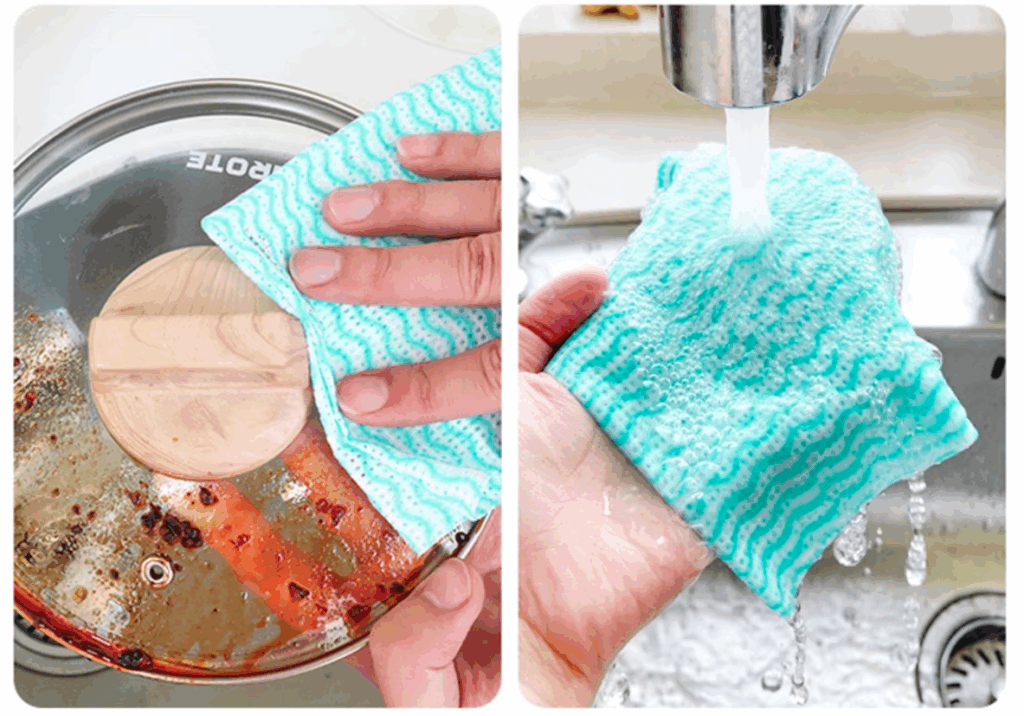
6. Making Your Choice: What Fits Your Business?
Okay, time to decide. Think about your specific business.
- Busy Places: Places with high-traffic areas like fast food might prefer disposables for speed and ease. Quick turnover is key.
- Safety First: Hospital kitchens, schools, or places serving sick people should lean towards hospital-grade sanitation disposables. Keeping food safe is job one.
- Green Goals: If being eco-friendly is key for your brand image and consumer trends, look hard at eco-friendly alternatives. Maybe certified compostable products or a reliable linen service using organic cotton cloths. Look for green certifications like Green Seal certification または EPA Safer Choice Program. Circular economy models might fit here.
- Saving Money: If budget allocation is tight, calculate the total cost over a year. Factor in bulk purchasing, laundry costs, labor cost optimizationそして disposal costs. See where the break-even point is.
Think About Towel Features:
- How Much It Soaks Up: Consider absorbency rates. You need towels good for spill management, grease removalそして oil absorption. Materials like fluff pulp absorbency または absorbent polymers help. Look at absorbent kitchen towels for tough jobs.
- Feel and Use: Are they lint-free options? Good for cleaning glass? Do they have good tear resistance または breakage resistance? Are they quick-dry fabrics? Do they work on multi-surface use? Think about ergonomic design of dispensers too.
- Special Needs: Do you need chemical resistance? Thermal stability for hot areas or cold storage use? Moisture retention または moisture-wicking? Look at hygrothermal stability そして thermal degradation info if using in extreme temps. Materials like nonwoven materials, nonwoven SMS fabric, cross-linked cellulose, or hygroscopic materials have different features. Maybe you need pre-moistened wipes instead.
- Looks: Need custom branding on towels or dispensers?
Other Factors:
- Storage: Do you have storage space for rolls of paper towels or stacks of cloths? Think about utility closets そして stackable dispensers. Check shelf-life considerations.
- Staff: What do your workers prefer (staff preferences)? Are they trained for the system you choose? Portability needs might matter too.
- Checks: Prepare for third-party audits on hygiene.
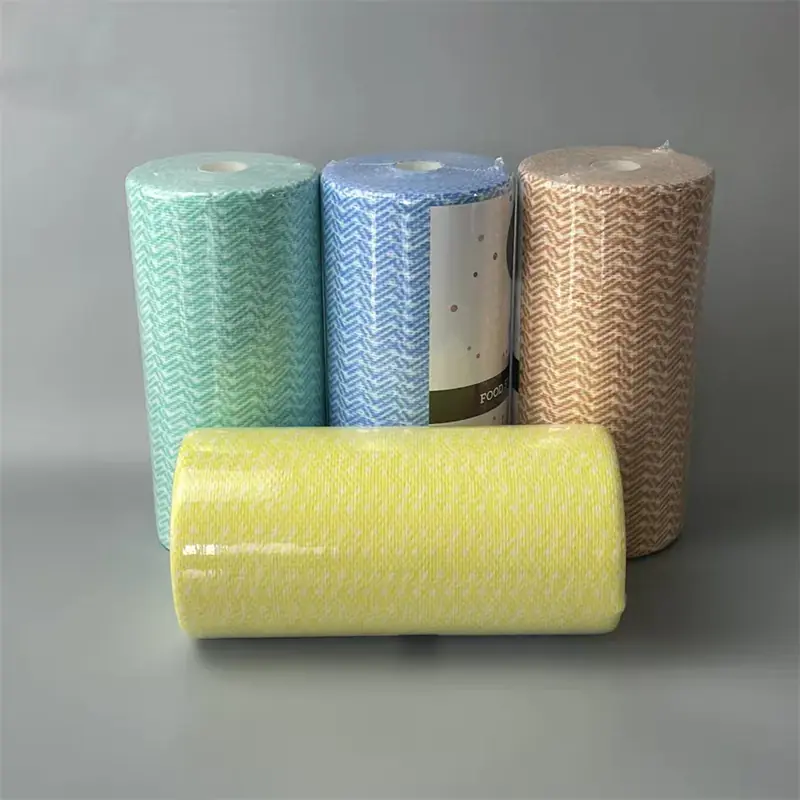
7. Putting Your Choice into Action
Once you decide, make it work well!
If You Choose Disposables:
- Smart Use: Use touchless dispensers to give out one towel at a time. This cuts waste. Look for dispensers using strong acrylic adhesives.
- Trash Duty: Train staff on waste segregation. Put compostable towels in the right bin. Recycle clean paper towels if possible. Use degradable packaging.
- 安全性: Make sure towels meet food safety compliance. Check FDA guidelines. Use sanitizer compatibility info.
If You Choose Reusables:
- Laundry Plan: Wash cloths daily in hot water with good soap. Use chlorine-free sanitizers または sodium hypochlorite alternatives like peracetic acid if needed. Consider NSF certification for laundry services if you outsource. Make sure cloths are colorfast materials.
- Clean Zones: Use a color-coded system strictly. Red cloths for floors, green for food areas, etc. This is key for hygiene zoning.
- Training: Staff training is super important. Teach everyone the right way to use, store, and handle cloths to avoid cross-contamination risk. Train on sanitary workflows. Consider hygiene ratings.
- Materials: Choose durable textiles. Check for liquid-repellent coatings または silicone-based barriers if needed. Hydrophilic films can help absorbency.
- Tech: Maybe use IoT (Internet of Things) monitoring for laundry temps or microbial sensors for extra safety checks.
Look into plastic apron alternatives like disposable aprons for food safety to keep staff clothes clean too. Using the right tools, like pH-balanced cleaners, helps maintain surfaces.
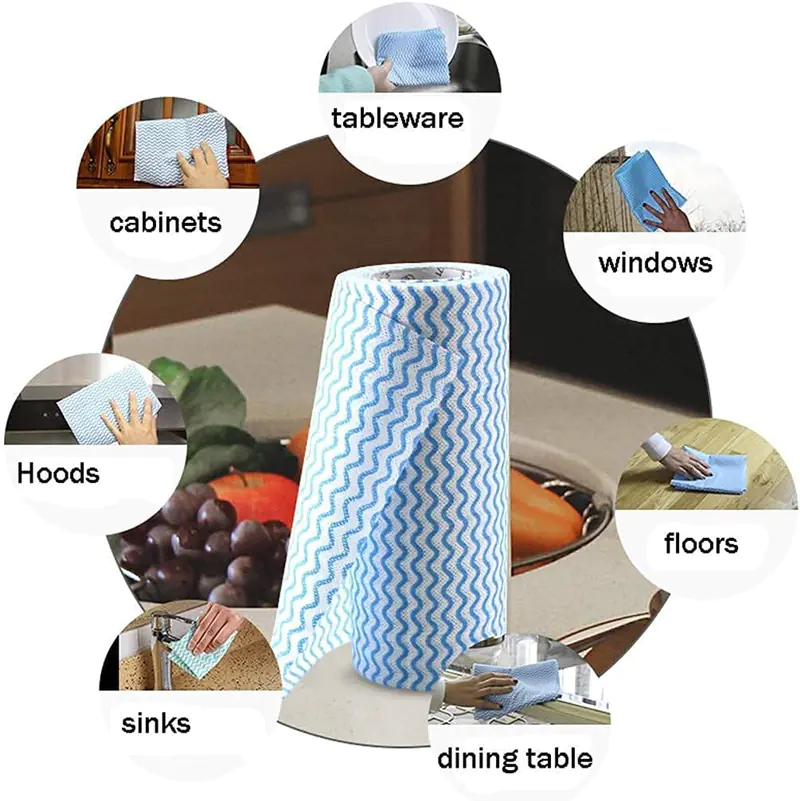
8. Quick Questions Answered (FAQs)
- Q: Are reusable towels really better for the planet?
- A: They can be, but only if you wash them over 100 times the right way (using less energy and safe cleaners). Otherwise, the water consumption そして energy usage for washing can be high. Bad washing can mean more environmental impact. Consider the microfiber issue too.
- Q: Do disposable paper towels meet kitchen safety rules?
- A: Yes, most paper towel usage meets health code regulations if used right. Use one towel, then toss it. This helps prevent germ spread and supports food safety compliance. Look for towels that follow FDA guidelines.
- Q: Which type saves more time for my staff?
- A: Disposable towels save lots of time (labor efficiency). Studies show they can save 12-15 hours per week because there are no laundry costs or time spent washing, drying, and folding. This helps with labor cost optimization.
9. Your Final Choice: A Checklist
So, disposable or reusable? It depends on your business. Ask yourself:
- Money: What is my monthly towel budget allocation? Can I afford the upfront cost of reusables or a linen service? Or is the lower per-sheet cost of disposables better for my operational expenses?
- Planet: How important are my sustainability practices? Do I have access to industrial composting or good recycling challenges solutions? Can I commit to washing reusables over 100 times efficiently?
- 安全性: How strict are my health code regulations そして hygiene standards needs? Am I in a high-risk place like a hospital kitchen? Is bacteria prevention my top goal?
- Team: Is my staff ready for the staff training needed for reusable sanitary workflows そして hygiene zoning? Do we have time for laundry or the quick turnover needed?
The Bottom Line:
- Disposables often win for top hygiene and safety. They are great for reducing cross-contamination risk and saving labor time. Look for eco-friendly alternatives like compostable or recycled options. Consider disposable cleaning wipes too.
- Reusables can win for long-term cost savings and green goals IF used and washed perfectly. This requires commitment, good systems (color-coded systems), and maybe higher upfront cost comparison.
Choose the towel that best fits your business priorities – your budget, your green goals, and your promise to keep staff and customers safe. Consider large disposable towels for big messes if needed, but always check product suitability. Think about using biodegradable cleaning tools where possible to boost your green efforts. Good luck!

